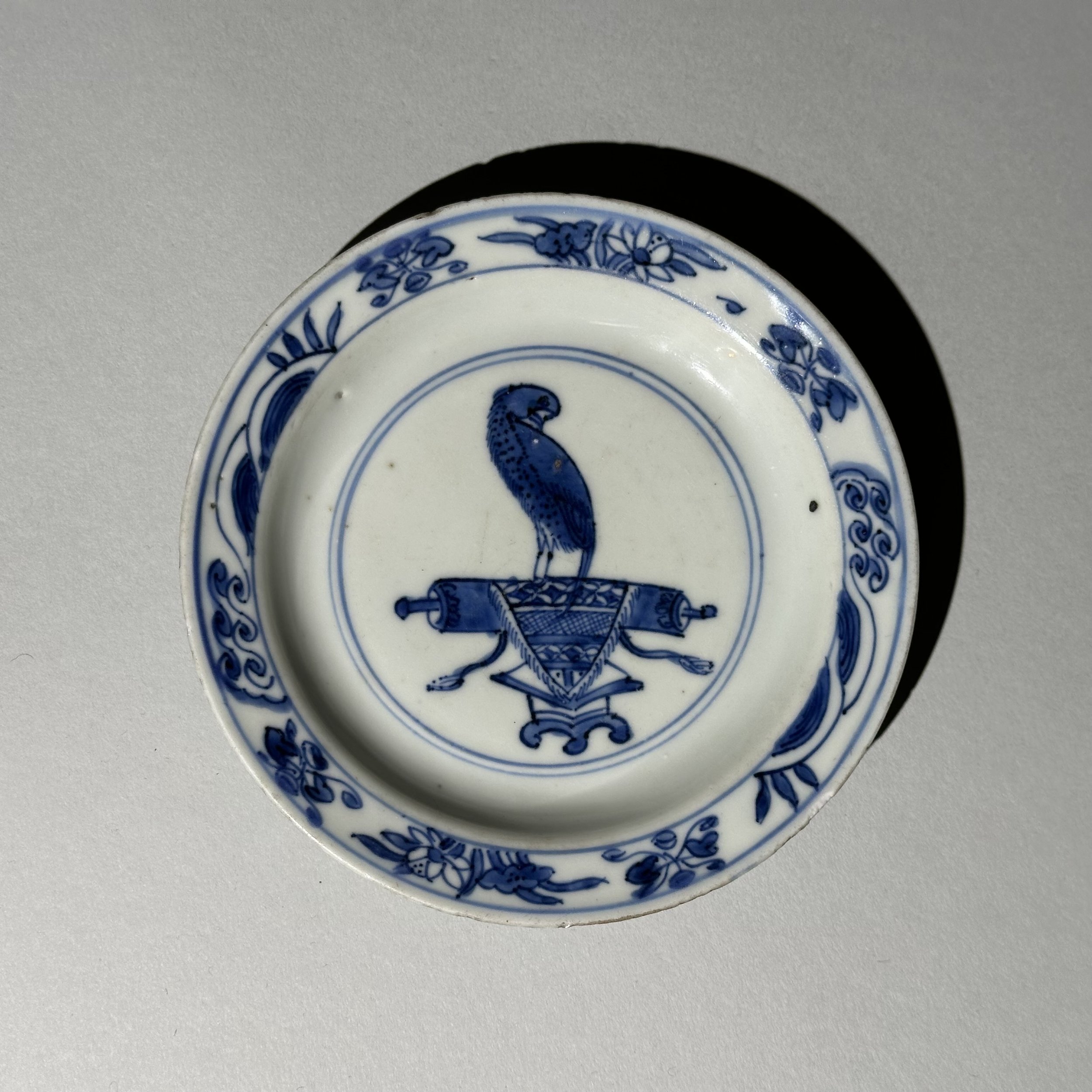 Image 1 of 5
Image 1 of 5

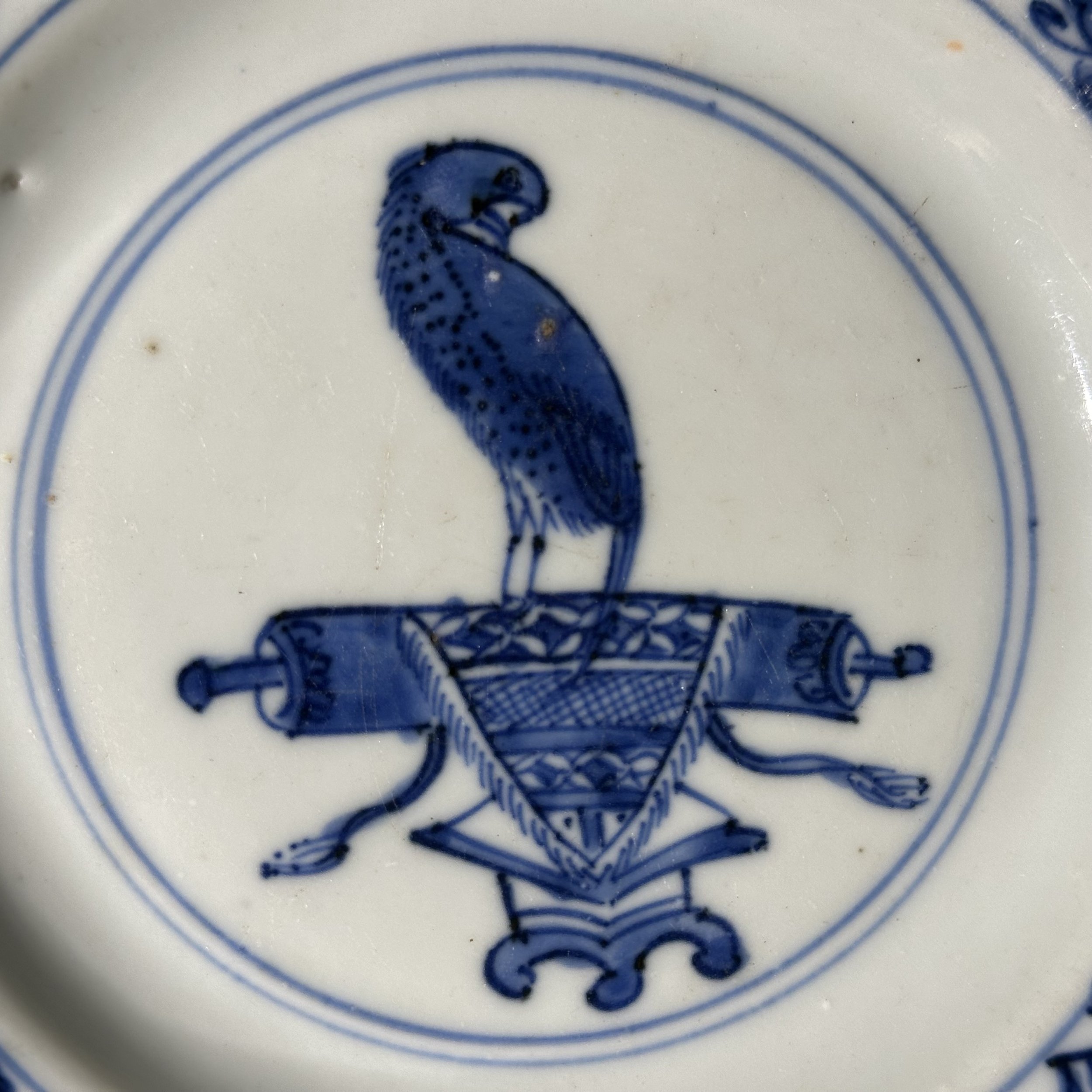 Image 2 of 5
Image 2 of 5

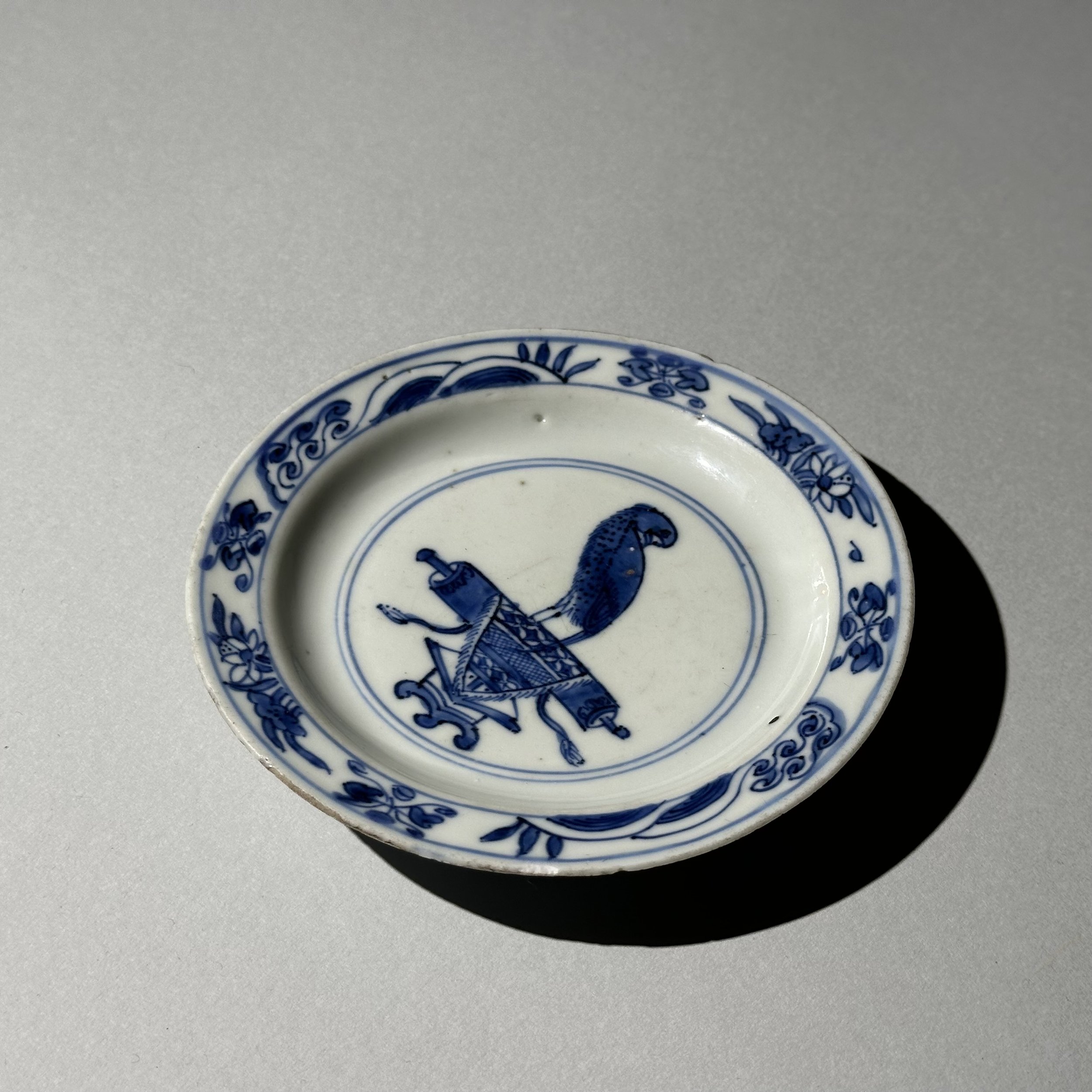 Image 3 of 5
Image 3 of 5

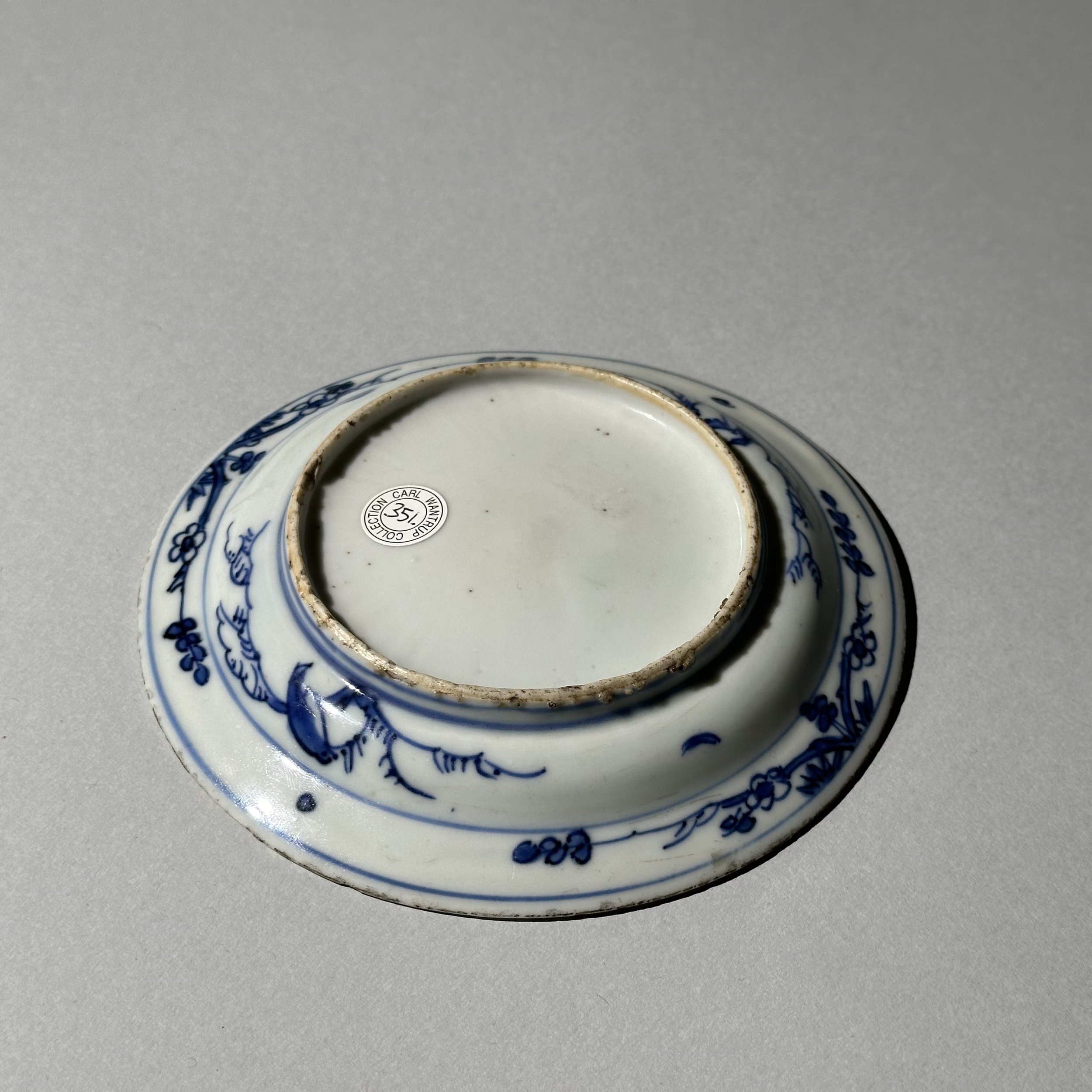 Image 4 of 5
Image 4 of 5

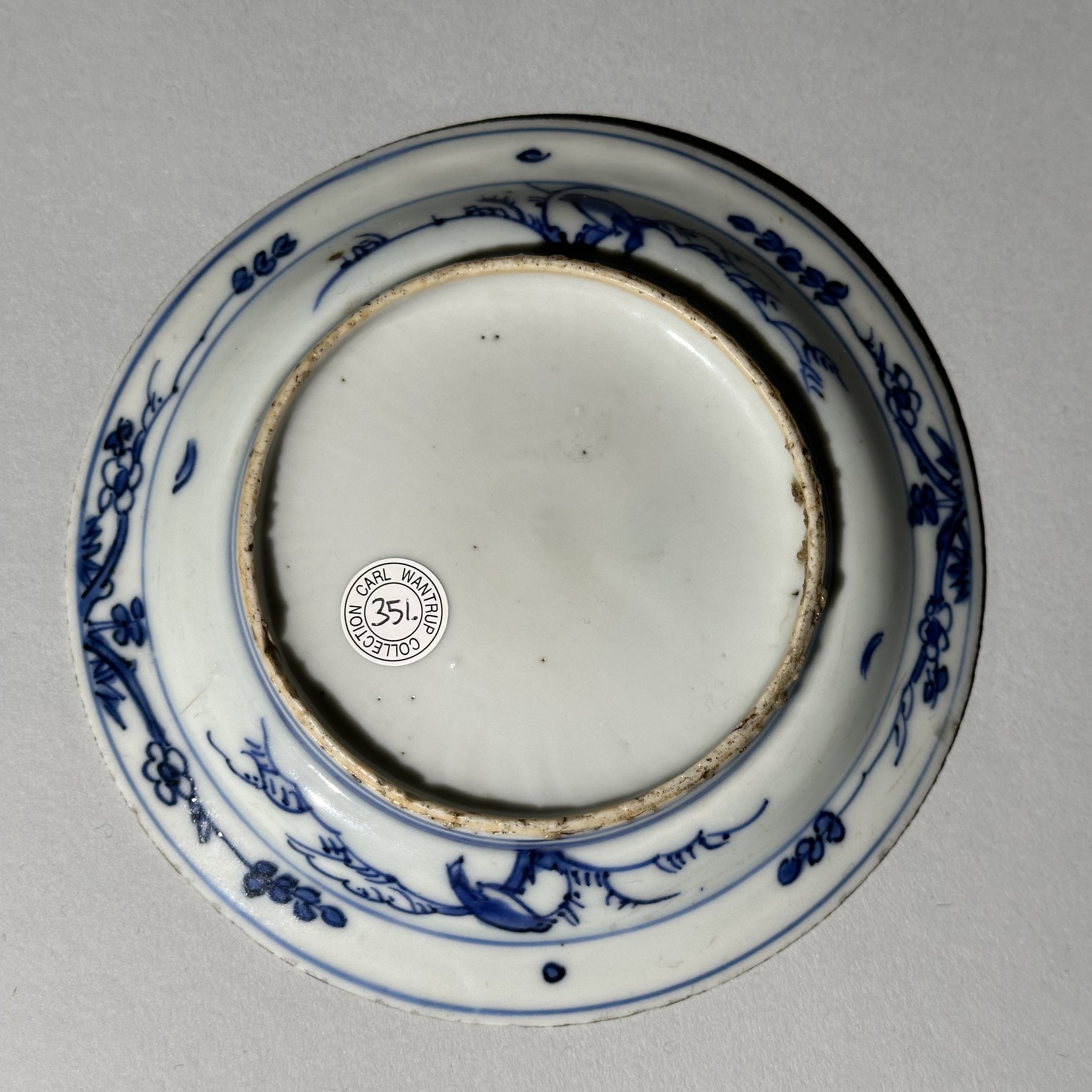 Image 5 of 5
Image 5 of 5






Ko-sometsuke blue and white parrot dish
Jingdezhen, China
Late Wanli (1572-1620) or Tianqi (1620-1627) Period
Finely potted and decorated with a parrot sitting on a scroll to the centre surrounded by lotus pond motifs to the rim. 2cm high, 13.25cm diameter. One small chip and fritting to the rim.
Cat. 351
Ko-sometsuke and Shonsui wares
The Japanese term Ko-sometsuke is best translated as ‘old blue and white’. Chinese ceramics and art had enjoyed a privileged place in Japanese high culture since the Asuka Period (538-710). At the fall of China’s Ming dynasty during the Tianqi Period (1620-1627), the kilns at Jingdezhen were suddenly unsupported by the Imperial court, and were seeking outside markets. Some of the great Japanese tea ceremony masters who also happened to be shipping merchants began to order blue and white porcelain from Jingdezhen according to their own designs. These pieces were unique in their designs and forms, being specifically made for use in the tea ceremony and kaiseki dining. Ko-sometsuke is often thickly potted, with warping and heavily fritted rims (called mushikui in Japanese, meaning insect-eaten). It was often based on Oribe and Shino forms and often used similar decoration, so exemplifying the wabi-sabi aesthetic (withered elegance). It was primally important in Sen no Rikyu’s wabi style of tea ceremony which was the prevailing style of the Momoyama (1568-1600) and early Edo (1603-1868) periods. A new style of Chinese blue and white for the Japanese market evolved in the Chongzhen period (1627-1644), informed by a new aesthetic established by Kobori Enshu (1579-1647), kirei-sabi (refined elegance). These wares known as Shonsui were more finely decorated, often with repeating brocade patterns within segmented designs.
Jingdezhen, China
Late Wanli (1572-1620) or Tianqi (1620-1627) Period
Finely potted and decorated with a parrot sitting on a scroll to the centre surrounded by lotus pond motifs to the rim. 2cm high, 13.25cm diameter. One small chip and fritting to the rim.
Cat. 351
Ko-sometsuke and Shonsui wares
The Japanese term Ko-sometsuke is best translated as ‘old blue and white’. Chinese ceramics and art had enjoyed a privileged place in Japanese high culture since the Asuka Period (538-710). At the fall of China’s Ming dynasty during the Tianqi Period (1620-1627), the kilns at Jingdezhen were suddenly unsupported by the Imperial court, and were seeking outside markets. Some of the great Japanese tea ceremony masters who also happened to be shipping merchants began to order blue and white porcelain from Jingdezhen according to their own designs. These pieces were unique in their designs and forms, being specifically made for use in the tea ceremony and kaiseki dining. Ko-sometsuke is often thickly potted, with warping and heavily fritted rims (called mushikui in Japanese, meaning insect-eaten). It was often based on Oribe and Shino forms and often used similar decoration, so exemplifying the wabi-sabi aesthetic (withered elegance). It was primally important in Sen no Rikyu’s wabi style of tea ceremony which was the prevailing style of the Momoyama (1568-1600) and early Edo (1603-1868) periods. A new style of Chinese blue and white for the Japanese market evolved in the Chongzhen period (1627-1644), informed by a new aesthetic established by Kobori Enshu (1579-1647), kirei-sabi (refined elegance). These wares known as Shonsui were more finely decorated, often with repeating brocade patterns within segmented designs.
